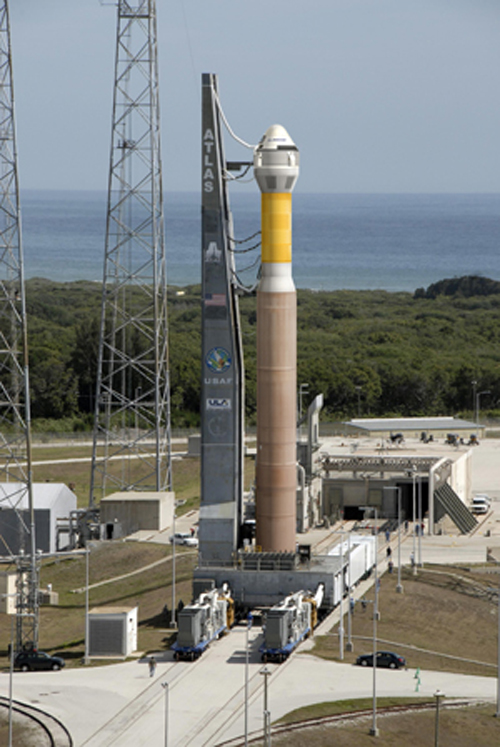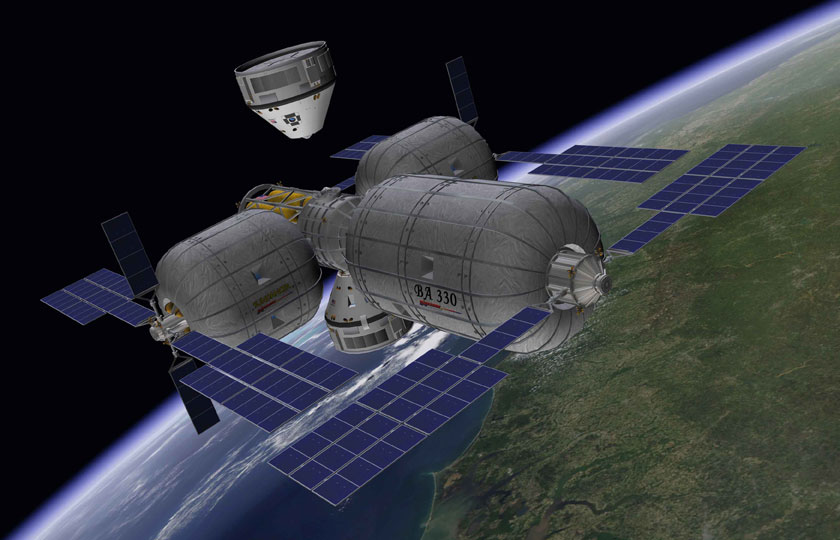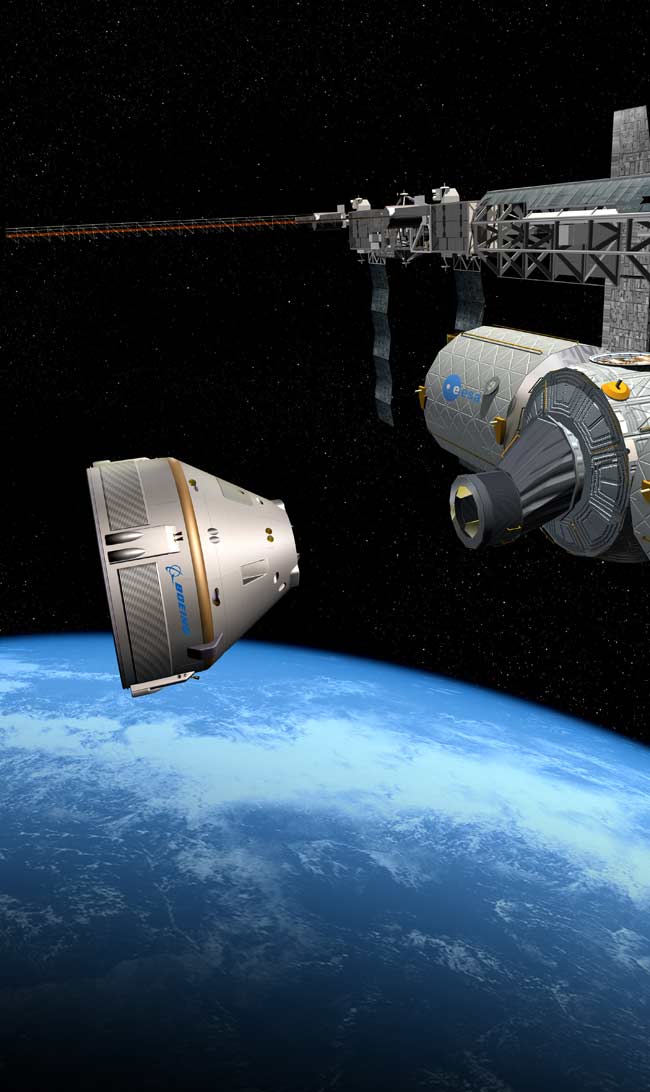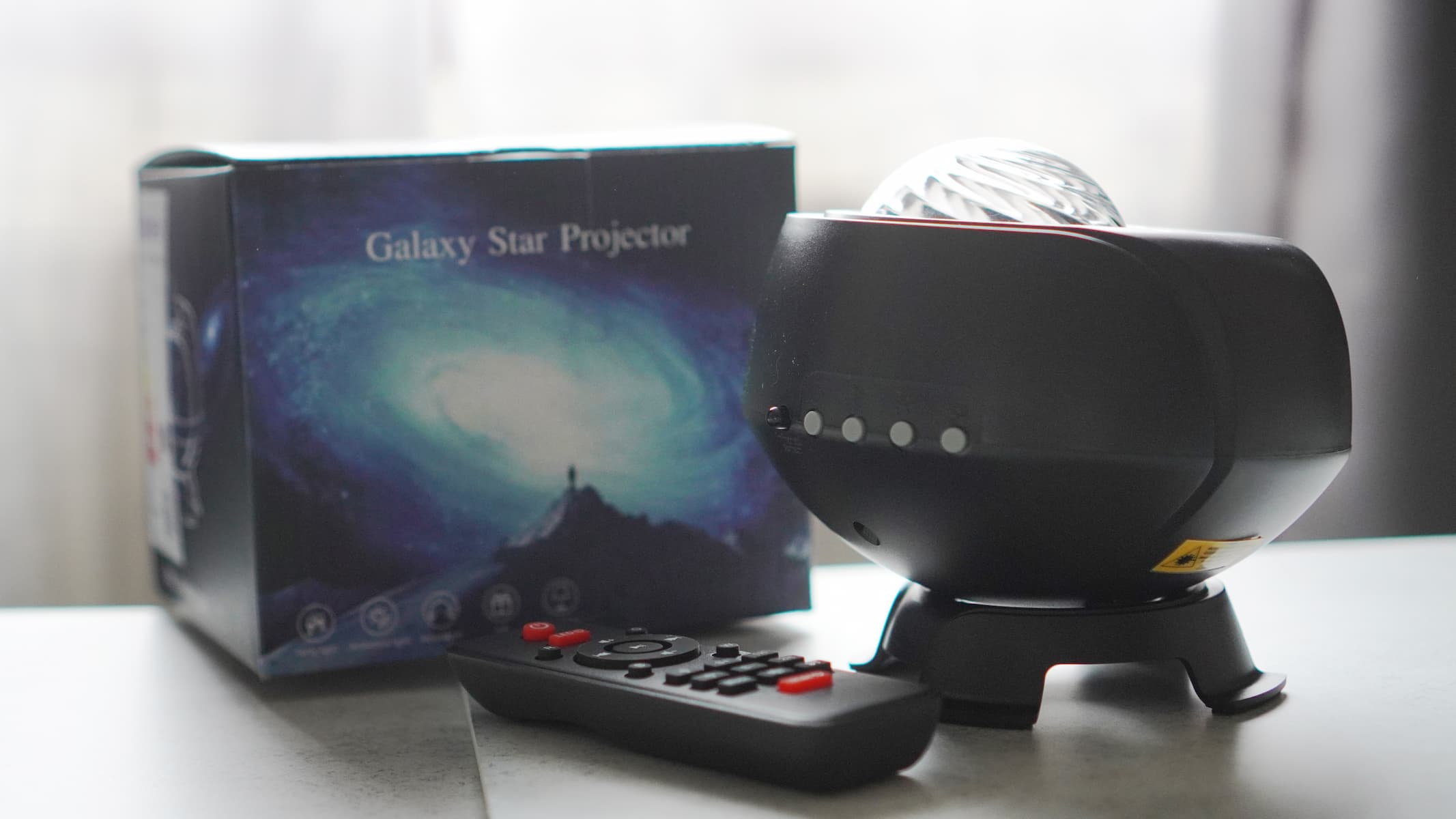Boeing Needs Space Pilots for Spaceship & Rocket Test Flights

This story was updated at 6:37 p.m. ET.
Boeing's new spaceship to fly astronauts into orbit for NASA and other customers has its rocket ride: an upgraded version of the Atlas 5 rocket currently used for satellite launches. All the company needs now are space test pilots.
In a deal with the rocket launch provider United Launch Alliance, Boeing has agreed to use the Atlas 5 rocket as the launch vehicle of choice for its new crewed spaceship, the Commercial Space Transportation-100 (CST-100).
The first piloted launch of an Atlas 5 rocket and CST-100 spacecraft is slated for late 2015, Boeing officials said in an Aug. 4 announcement.
Two Boeing space test pilots will fly the mission, which will blast off from the Cape Canaveral Air Force Station in Florida, though the company is still searching for those crewmembers, as well as other astronaut candidates.
John Elbon, Boeing's vice president and program manager for commercial crew vehicles, said that picking a rocket to launch the CST-100 is a major step for the vehicle's development. [10 Private Spaceships Headed for Reality]
"It's another step toward making this a reality," Elbon told reporters in the Aug. 4 teleconference. "It's just really important for the country that we keep momentum … keep focus on this so that we can have a capability for launching Americans into space soon."
Get the Space.com Newsletter
Breaking space news, the latest updates on rocket launches, skywatching events and more!

Boeing needs astronauts
Since NASA's 30-year space shuttle program shut down in July, the space agency currently has no American vehicle to launch astronauts into space.
Elbon said Boeing is currently looking for astronaut candidates to fly on the CST-100 spacecraft and while spaceflight experience is not required, former NASA astronauts are welcome to apply. [Video: Boeing's CST-100 Spaceship Revealed]
"We'll go through a selection process for that," Elbon said. "Certainly somebody that's flown in space would have good credentials and fare well in the selection process, I think."
Elbon said Boeing considered several rockets, including those planned by companies like SpaceX and ATK, to launch the CST-100. Since Boeing is a partner with Lockheed Martin in the United Launch Alliance, the final deal was subjected to increased scrutiny to ensure there was no bias in the selection, he added. No price or cost information was unveiled during the announcement.
Boeing builds the Delta 2 and Delta 4 family of rockets launched by the ULA, while Lockheed Martin builds the Atlas 5 boosters launched by the firm.
Boeing's new spaceship takes shape
Boeing is one of four companies using NASA funding to develop commercial spaceships to launch astronauts into orbit for trips to the International Space Station. The company's CST-100 spacecraft is designed to be a reusable space capsule capable of flying up to seven people, or a mix of crew and cargo, on orbital spaceflights.
Boeing's CST-100 vehicle is about 15 feet (4.5 meters) wide and designed for reusability for up to 10 flights per capsule, Boeing officials have said. The spacecraft is not only intended for trips to the International Space Station, but also to ferry crews to future private space stations like the inflatable habitats envisioned by the Las Vegas-based company Bigelow Aerospace, which has partnered with Boeing to provide transportation to their outposts.
The Atlas 5 rocket is an expendable booster that has launched 26 missions for the U.S. National Reconnaissance Office, NASA and other customers, with a 100-percent success rate. The most recent Atlas 5 rocket launched on Friday (Aug. 5) to send NASA's Juno spacecraft on its way toward Jupiter. [Atlas 5 Rocket Launch Photos for NASA's Juno Mission]
The Atlas 5 rocket stands 191.2 feet (58.3 meters) tall and comes in several configurations. The rocket that launched the Juno spacecraft on Friday was aided by five strap-on solid rocket boosters. The version that will launch CST-100 will include only a single solid rocket booster, Boeing officials said.
NASA's space shuttle program retired for good last month after the final mission returned to Earth on July 21. The space agency is now in a years-long gap between the shuttle era's end and the availability of private spaceships like Boeing's CST-100 and others to launch Americans into orbit.
But until those private spaceships are operational, NASA must rely on its international partners for access to the International Space Station. NASA will include cargo on robotic delivery ships launched by Russia, Japan and the European space agencies, while American astronauts will fly on Russia's Soyuz vehicles.
Boeing received $92.3 million from NASA in April during the space agency's second round of its Commercial Crew Development Program (CCDev-2) to spur the development of private spaceflight vehicles. Three other companies — SpaceX of Hawthorne, Calif.; Blue Origin of Kent, Wash.; Sierra Nevada Corp., of Louisville, Colo. — also received funding for their own private spaceship efforts.

Test flights planned
Boeing plans a tiered testing program for the CST-100 vehicle, starting with parachute drop tests and a ground-based demonstration of the spacecraft's launch abort system, an escape system designed to carry astronauts to safety in event of a rocket failure.
If successful, three test flights would follow in 2015, Elbon said. Those flights would include an unmanned launch test of the Atlas 5 rocket and capsule in early 2015, an in-flight launch abort system test in the middle of that year, then the actual crewed test flight at the end of 2015 carrying two pilots into space.
"Our approach is to build a reliable spacecraft built on existing simple systems and then integrate that with a proven launch vehicle, all focused on putting in place a very safe system," Elbon said. "One that will be reliable and one that can be operational as soon as practical so we can start flying U.S. crew from U.S. launch sites."
Still, Elbon said Boeing will need continued funding from NASA if it is to reach its goal of launching humans into orbit aboard CST-100 vehicles. The company's current funding level for the project will support the CST-100 through the preliminary design review stage, he added.
You can follow SPACE.com Managing Editor Tariq Malik on Twitter @tariqjmalik. Follow SPACE.com for the latest in space science and exploration news on Twitter @Spacedotcom and on Facebook.
Join our Space Forums to keep talking space on the latest missions, night sky and more! And if you have a news tip, correction or comment, let us know at: community@space.com.

Tariq is the Editor-in-Chief of Space.com and joined the team in 2001, first as an intern and staff writer, and later as an editor. He covers human spaceflight, exploration and space science, as well as skywatching and entertainment. He became Space.com's Managing Editor in 2009 and Editor-in-Chief in 2019. Before joining Space.com, Tariq was a staff reporter for The Los Angeles Times covering education and city beats in La Habra, Fullerton and Huntington Beach. In October 2022, Tariq received the Harry Kolcum Award for excellence in space reporting from the National Space Club Florida Committee. He is also an Eagle Scout (yes, he has the Space Exploration merit badge) and went to Space Camp four times as a kid and a fifth time as an adult. He has journalism degrees from the University of Southern California and New York University. You can find Tariq at Space.com and as the co-host to the This Week In Space podcast with space historian Rod Pyle on the TWiT network. To see his latest project, you can follow Tariq on Twitter @tariqjmalik.
